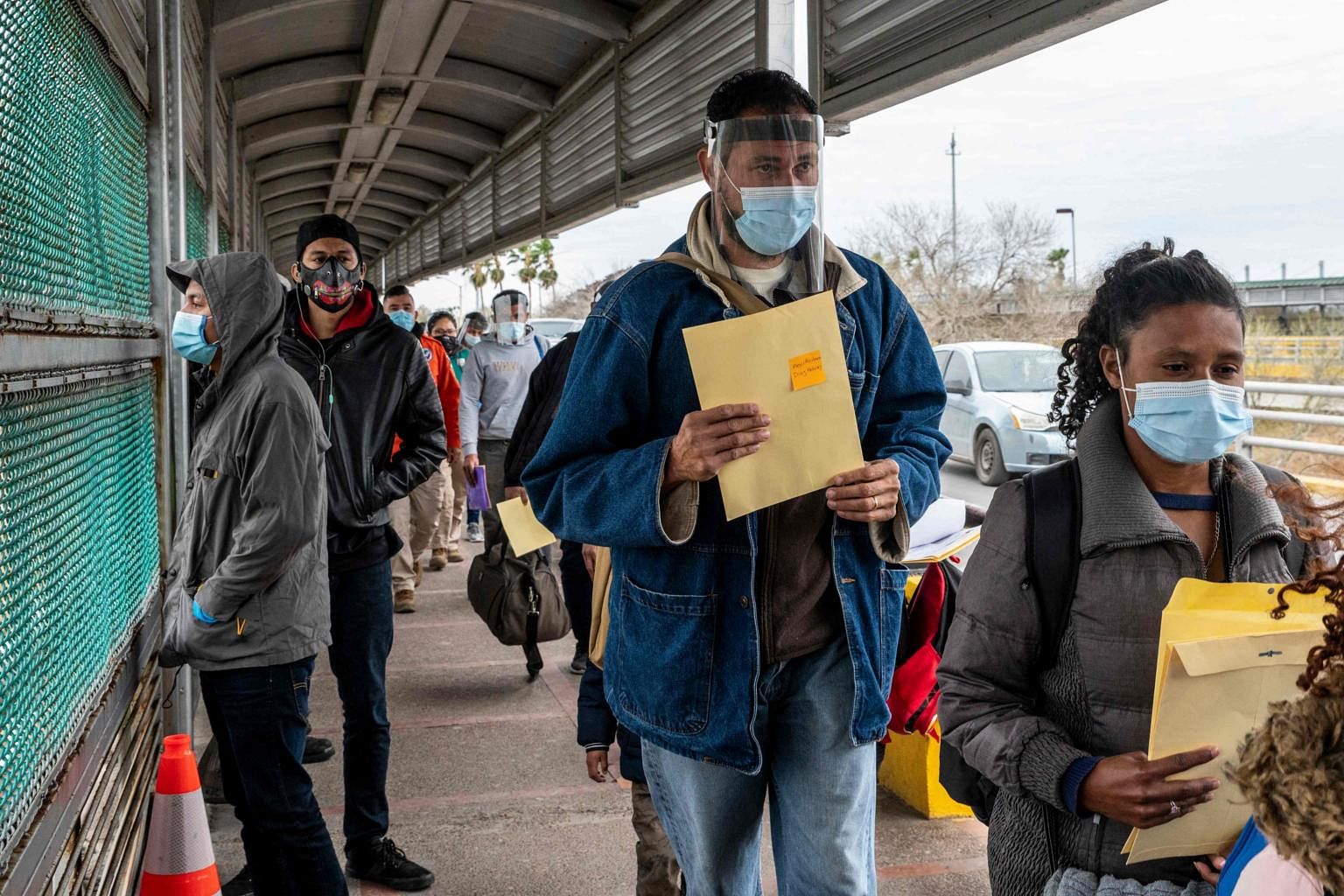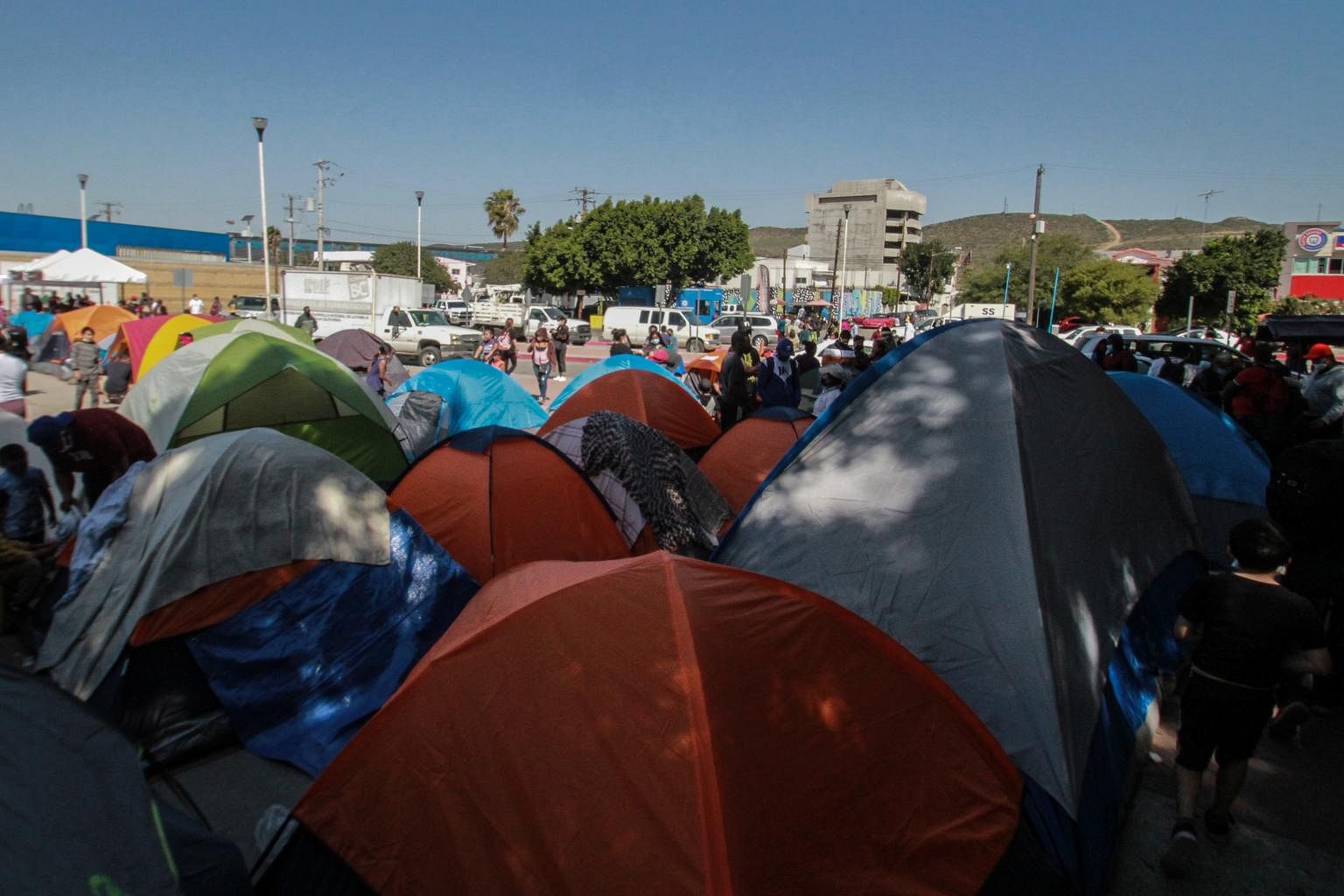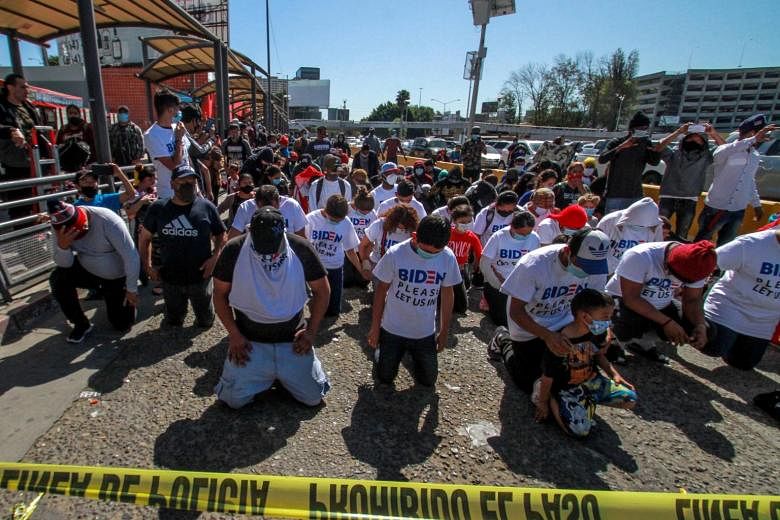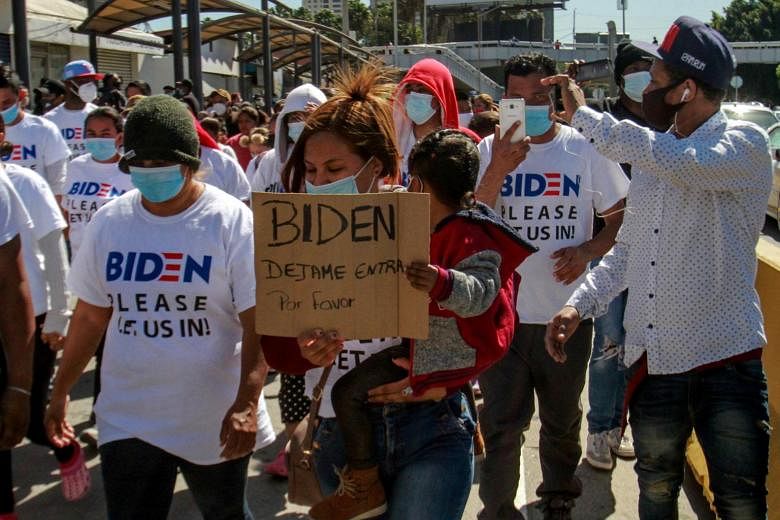WASHINGTON (NYTIMES) - Thousands of migrant children are backed up in US detention facilities along the border with Mexico, part of a surge of immigration from Central Americans fleeing poverty and violence that could overwhelm President Joe Biden's attempt to create a more humane approach to those seeking entry into the country.
The number of migrant children in custody along the border has tripled in the past two weeks to more than 3,250, according to federal immigration agency documents obtained by The New York Times, and many of them are being held in jail-like facilities for longer than the three days allowed by law.
The problem for the administration is both the number of children crossing the border and what to do with them once they are in custody.
Under the law, the children are supposed to be moved to shelters run by the Health and Human Services Department, but because of the pandemic, the shelters until last week were limiting how many children they could accommodate.
The growing number of unaccompanied children is just one element of an escalating problem at the border.
Border agents encountered a migrant at the border about 78,000 times in January - more than double the rate at the same time a year ago and higher than in any January in a decade. Immigration authorities are expected to announce this week that there were close to 100,000 apprehensions, including encounters at port entries, in February, according to people familiar with the agency's latest data.
An additional 19,000 migrants, including adults and children, have been caught by border agents since March 1.
"We're at an inflection point," said Theresa Cardinal Brown, the director of immigration and cross-border policy at the Bipartisan Policy Centre, an independent research group. "How quickly can the government process people safely and humanely?" The situation resembles the huge wave of migrant children that filled detention centres in 2014 that preceded the harsh crackdown imposed by President Donald Trump.
Seven years ago, Biden, the vice president at the time, travelled to Guatemala and declared that "the current situation is untenable and unsustainable." Now, Biden is facing a migration challenge of his own - one that his administration has refused to call a "crisis" but could nevertheless become a potent political weapon for his Republican adversaries and upend his efforts to legalise millions of immigrants who entered the US illegally.
The president has proposed overhauling the nation's decades-old immigration system by making it easier for asylum-seekers and refugees, expanding legal pathways for foreign workers, increasing opportunities for family-based immigration and vastly reducing threats of mass deportations.
His State Department announced Monday (March 8) that foreigners rejected after Jan 20, 2020, under Trump's travel ban could try to obtain visas without paying additional fees. But his approach - to broadly reopen the nation's borders to vulnerable children with what he hopes will be a welcoming contrast to Trump's erection of legal and physical barriers - is already at risk from the grim realities of migration patterns that have roiled the globe for years.
Sensing a change in tone and approach after Trump's defeat, migrants are once again fleeing poverty, violence and the devastation left by hurricanes and heading north toward the United States. Hundreds of migrant families are also being released into the United States after being apprehended at the border, prompting predictable attacks by conservatives.
Liberal politicians are denouncing the expansion of detention facilities and railing against the continued imposition of Trump-era rules intended to prevent the spread of the coronavirus from immigrants. And advocates for families separated at the border during Trump's administration are pressuring the president to move faster to reunite them.
Together, it has put Biden on the defencive in the early days of his presidency as he attempts to demonstrate a tone very different from his predecessor's. The immigration system Biden envisions will take months, if not years, to be fully implemented, forcing the administration to scramble to find space for children and rely, for now, on a rule that swiftly returns adults and most families to their home countries.
For now, Biden has broken from his predecessor in not applying the pandemic emergency rule to children, meaning the United States is still responsible for caring for them until they are placed with a sponsor.

The criticism is coming from all sides even as the president attempts to navigate the narrowest of margins to get a once-in-a-generation immigration bill through Congress.
Rep. Alexandria Ocasio-Cortez, D-N.Y., said the continued detention of families in a tent facility "is not OK, never has been OK, never will be OK." And Republicans are already signalling that they plan to put the consequences of Biden's immigration agenda at the centre of their efforts to retake Congress in 2022.
They have pointed to Biden's decision to gradually welcome back asylum-seekers who were forced to wait in Mexico for months under a Trump-era programme.
Trump, who harnessed the power of anti-immigrant sentiment during his 2016 campaign, warned in a blistering statement last week of a "spiralling tsunami at the border" and predicted that "illegal immigrants from every corner of the Earth will descend upon our border and never be returned."
Biden, briefed on the issue last week, deployed his top administration officials to tour the facilities at the border this past weekend. The administration has made disaster aid funding available to border communities, has redirected agents from the northern border to the southern border and is considering a pilot programme that would place health officials at border facilities to speed up children's search for a sponsor.
Anticipating the arrival of even more children at the border, the administration directed the shelters on Friday to return to their full capacity despite the pandemic. Rep. Bennie Thompson, D-Miss., the chairman of the House Homeland Security Committee, said Alejandro N. Mayorkas, the homeland security secretary, told him in a phone call Friday that the administration was rushing to find more space for the children. "You can't just say we don't have space anymore," Thompson said. "You have to start looking."

Administration officials point to a flurry of actions underway aimed at fixing what they say is a broken immigration system: improving communications between the Border Patrol and the health department, including whether the children being transported to the long-term centres are boys or girls; streamlining background cheques for shelter employees; and vaccinating border workers against the coronavirus. They are also accelerating efforts to get new facilities to care for children during the weeks and months that it takes to find relatives or foster parents. They are considering unused school buildings, military bases and federal facilities that could be rapidly converted into places acceptable for children. And they are restarting a programme in Central America that will allow children to apply for asylum without making the dangerous trek to the border. Trump ended the programme, which Biden administration officials said would eventually reduce the flow of migrant children to the United States. But all of that will take time. Meanwhile, officials say, they recognise that the pressure on Biden will only increase.
"At every step of the way we're looking at where are the bottlenecks and then trying to eliminate those bottlenecks, and yes it won't be solved by tomorrow," said Esther Olavarria, the deputy director for immigration at the White House's Domestic Policy Council. "But if you don't start to do each of these things, you are never going to solve the problem."


